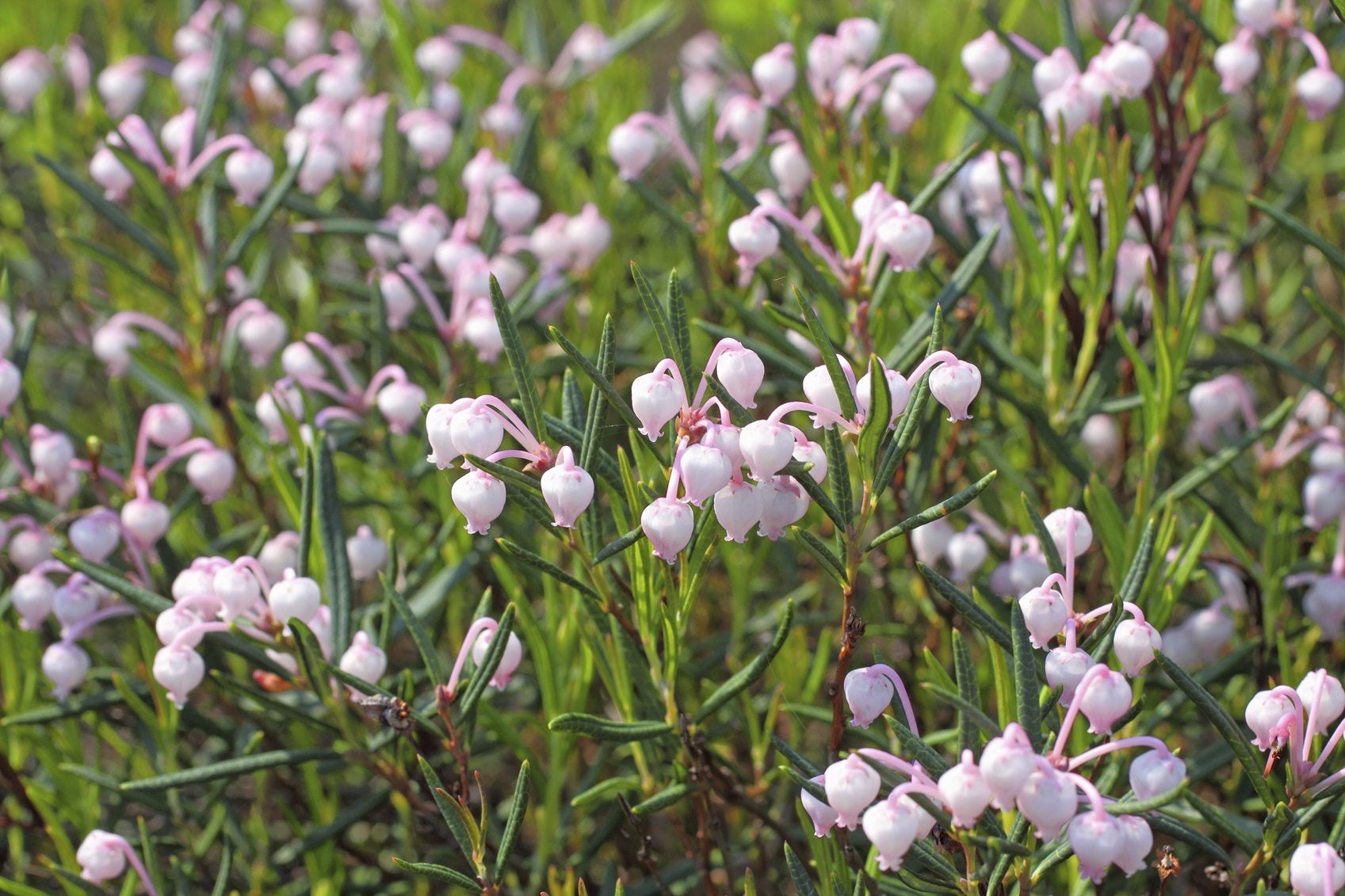Bog Rosemary Care: How To Grow Bog Rosemary Plants


What is bog rosemary? It is a marsh plant very different from the rosemary you cook with in the kitchen. Bog rosemary plants (Andromeda polifolia) thrive in boggy habitats like wet swamps and dry bog moss hummocks. Read on for more information on bog rosemary plants, including tips for bog rosemary growing.
What is Bog Rosemary?
Bog rosemary plants, also known as marsh Andromeda because of the species name, are creeping evergreens. Low to the ground, no taller than a couple of feet (61 cm.), they thrive in soggy areas in the landscape. This native is found growing wild in the northeast United States. It also is native to parts of Europe and Asia. The new growth of these marsh Andromeda shrubs is usually lime green, although sometimes you find reddish hues. The growth is covered with a waxy film and matures into a deep green or blue green with pale downy undersides. The leaves of bog rosemary plants are shiny and leathery. The foliage contains andromedotoxin, a powerful poison, so bog rosemary plants are rarely nibbled on by animals. Bog rosemary blossoms are unusual flowers. You’ll see a half-dozen tiny urn-shaped flowers growing together in a cluster at each stem tip. The flowers appear in May, each about ¼ inch (66 mm.) long and pale pink. The fruits of marsh Andromeda are small bluish dried capsules that turn brown in October. Neither the flowers nor the seeds are particularly showy.
Bog Rosemary Growing
If you have a perpetually wet corner of the garden, bog rosemary growing might be just the thing. True to its common names, marsh Andromeda loves and thrives in marshy areas. Don’t worry about spending a lot of time on bog rosemary care either. If you place this shrub in an appropriate site, bog rosemary care takes very little effort. When you have bog rosemary growing in a boggy spot in your backyard, you’ll find that it spreads quickly and requires little, if any, assistance. The plant tolerates compacted soil, wind and ice, preferring a location in USDA plant hardiness zones 3 through 6. Another reason you won’t have to spend too much time on bog rosemary care: the plant has few disease or insect troubles. You don’t need to fertilize or prune it.
Sign up for the Gardening Know How newsletter today and receive a free copy of our e-book "How to Grow Delicious Tomatoes".

Teo Spengler is a master gardener and a docent at the San Francisco Botanical Garden, where she hosts public tours. She has studied horticulture and written about nature, trees, plants, and gardening for more than two decades, following a career as an attorney and legal writer. Her extended family includes some 30 houseplants and hundreds of outdoor plants, including 250 trees, which are her main passion. Spengler currently splits her life between San Francisco and the French Basque Country, though she was raised in Alaska, giving her experience of gardening in a range of climates.